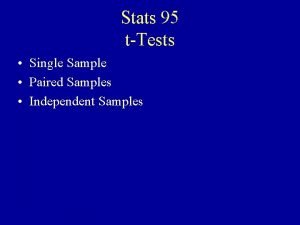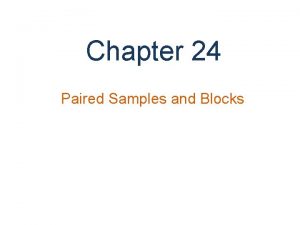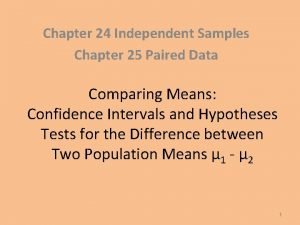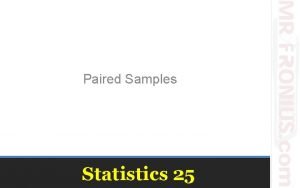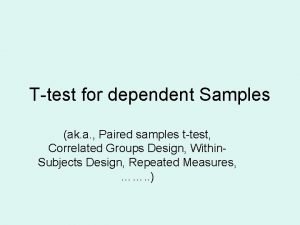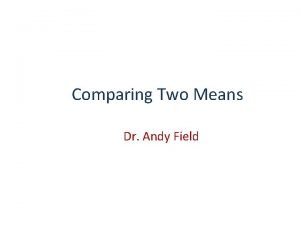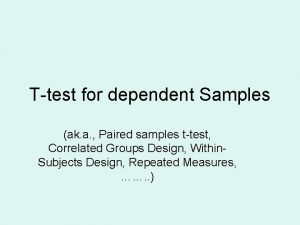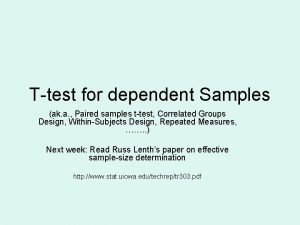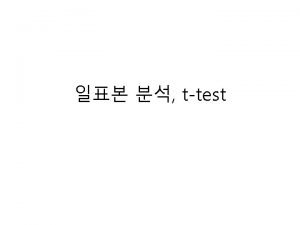2 Means ttest Paired Samples When to use






- Slides: 6

2 Means t-test (Paired Samples) When to use this tool Use this test to compare the means of two dependent (paired) populations, such as 'Before' and 'After' measurements of test scores for the same group of subjects. As an example, a researcher might use this test to compare the mean response time to a stimulus before and after a treatment regimen is administered to a group of subjects. The test makes the following conditions/assumptions: • The paired differences are continuous numeric. • The units are randomly sampled. • The paired differences are normally distributed. Tutorial: https: //media. moresteam. com/university/tutorials/nonint/new/two_means_paired. mp 4

Using Engine. Room Analyze > Parametric > 2 Means t-Test You can also use the Wizard: Analyze > Hypothesis Testing Wizard

2 Means t-Test (Paired Samples) Example pairedt_exmpldata. xlsx Steps: If using raw data, your data variables may be in two separate columns (unstacked) or in a single column (stacked) with a second column containing the group IDs. The group ID variable should be dragged on to the 'Grouping Variable' drop zone on the study. For this example, we have unstacked data on the sales (in thousands) made by 9 associates Before and After a training program. We want to test whether training increased the sales by more than $3 K. 1. Drag the After variable onto the Data variable drop zone, then drag the Before variable onto the second Data variable drop zone on the study. 2. Click “Continue”. 3. Set up the test as shown • Alternative Hypothesis: “Greater than” • Significance level: 0. 05 • Hypothesized Mean Difference: 3 4. Click “Continue”.

2 Means t-Test (Raw Data) Output

2 Means t-Test (Summary Data) Example If you have the sample summary data for the differences of the paired observations, enter them into the test dialog and follow the remaining steps as above: • Name: “After-Before” • Sample Size (n): 9 • Mean of Diff. : 11. 89 • Paired Std. Dev. : 6. 89 • Click “Continue”.

2 Means t-Test (Summary Data) Output
